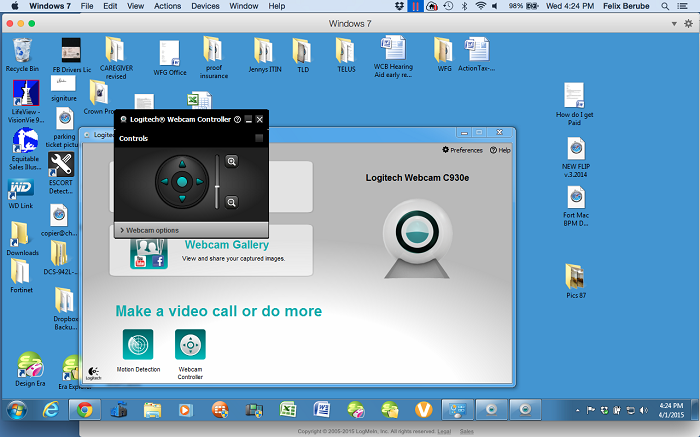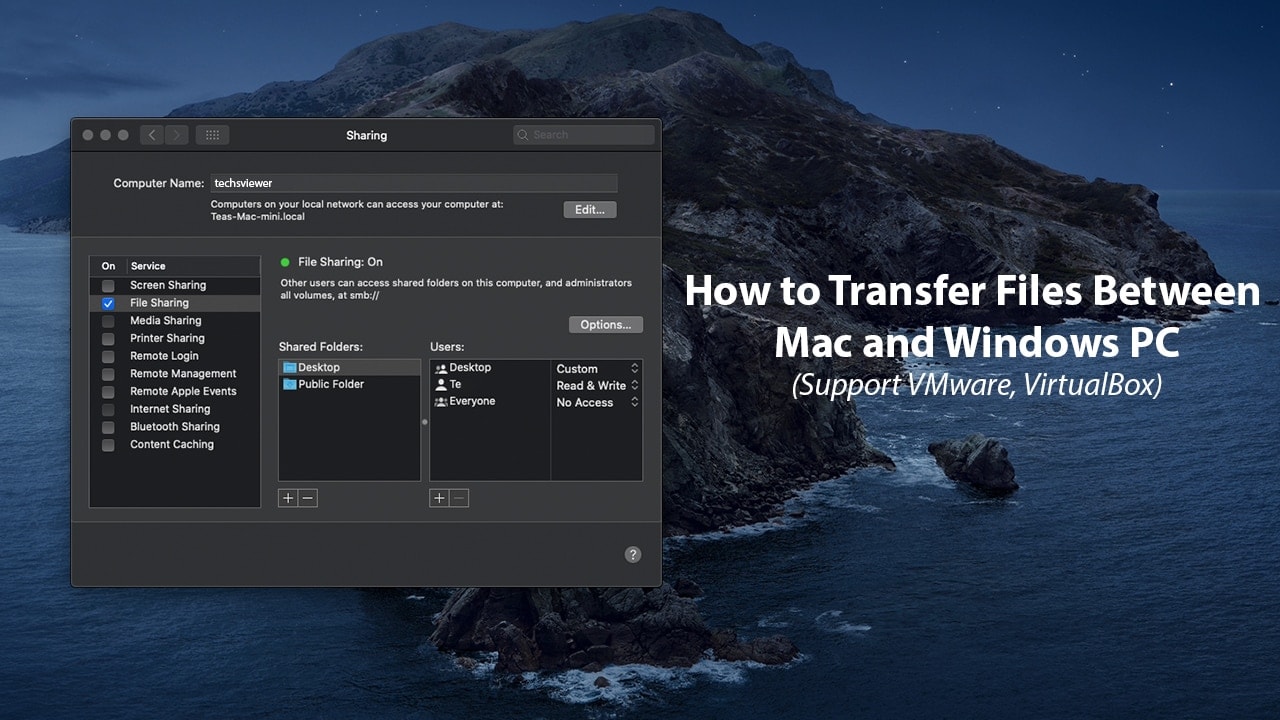

- #Hard drive between mac and pc using virtualmachine how to
- #Hard drive between mac and pc using virtualmachine windows 10
- #Hard drive between mac and pc using virtualmachine Bluetooth
- #Hard drive between mac and pc using virtualmachine download
I have ensured it is not mounted in the Mac environment. I have tried using the different USB ports on my Mac. You could also buy as mall NAS, something like a synology and enable CIFS access on that. The mac will connect to the share on the server, pass to the file to windows and windows will then write it to the NTFS partition. This means that you can use a windows server with an NTFS file system just fine.
#Hard drive between mac and pc using virtualmachine Bluetooth
What I have tried: I have connected the EHD to my virtual machine by going to Virtual Machine -> USB & Bluetooth -> Connect EHD. both Mac's and PC's can connect to a CIFS share. cdr image only if you modify the file type to All files. This will allow you to choose the macOS image file. Step 2: Choose Installer disc image file (iso) and click Browse.

Process leading up to problem: 1) Plug EHD via USB 3.0 into Mac, 2) Click 'Connect to Windows' (or something like that) when Mac prompts where to connect the EHD to, 3) Ensure it is not mounted in Mac environment and check in virtual Windows environment, it is not in 'This PC' ('My Computer') Step 1: Open VMware and click File > New Virtual Machine. Needless to say, it cannot be found in 'This PC' (aka 'My Computer')

Problem: Windows can see the EHD because it's listed under 'Devices and Printers', but it's listed as an 'Unspecified' device. Goal: Read/write/delete/etc on external hard drive (I'm just going to abbreviate this as EHD) in virtual Windows environment
#Hard drive between mac and pc using virtualmachine windows 10
Hope this helps some of you running out of space on OSX.Using: VMWare Fusion 8.0.0, El Capitan 10.11.4 on MacBook Pro (Late 2013), Windows 10 圆4 (trial version by the way), LaCie 1TB Porsche Design Mobile Drive (USB 3.0, NTFS) Delete the old VM image (after testing the new image).Drag the VM’s image directly to removable media.Once it is complete, right click on the VM in the library viewer and hit “Show in Finder”

Use the wizard to transfer your current physical PC to an external hard drive or your Mac over the network, choosing exactly what makes it into that virtual machine.
#Hard drive between mac and pc using virtualmachine how to
So let us see How to Quickly Format an External Hard Drive for Mac and Windows.
#Hard drive between mac and pc using virtualmachine download
Note that you will need at least as much free hard disk space as the size of the VM available before you can split the virtual disk.Ĭlick apply and wait for the operation is complete Step 2: With VMWare open, in the menu bar click Virtual Machine USB & Bluetooth and select the BOOTCAMP external SSD that you created earlier. Download the Parallels Transporter Agent application from Parallels and run it on your Windows or Linux system. In this video we will see How to Format a Hard Drive For Both Windows and Mac. Go to the “Removable Devices” section and click on the “Hard Disk” icon (you may have more than one)Ĭlick on the advanced options drop down and make sure that Split into multiple files is selected.Right click on the VM and go to “Settings…”.Click on Start-> Select the folder to share->Click on Share tab->Click Specific people->Select Everyone->Click Share and then Done. Click Advanced Share Settings and Check the Turn on file and printer sharing box. If the drive needs an external power supply, plug that in ahead of connecting up the USB cable. Click on Start->Control Panel->Network and Internet->Network and Sharing Center. Connect the USB cable to your hard drive and plug the other end into your Mac. Luckily changing one option on your VM’s hard disk(s) will allow you to back it up to FAT-32 formatted media. External Hard Drive Compatible with Mac and PC Without Reformatting. Unfortunately, FAT-32 is quite dated and doesn’t allow any file larger than 4GiB. The easiest way to do that is to hit CMD and the spacebar at the same time and type in Disk Utility to find the program. I use FAT-32 on my external drives for maximum compatibility between Mac, Windows and Linux. Moving a VMWare Fusion VM to a FAT32 External Hard Diskīacking up or moving a VMWare Fusion VM to an external hard drive is usually no problem - except when your destination filesystem is FAT-32.


 0 kommentar(er)
0 kommentar(er)
